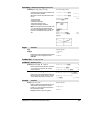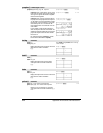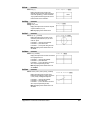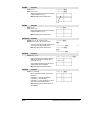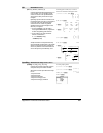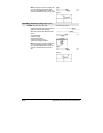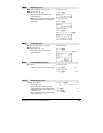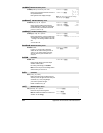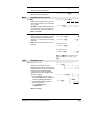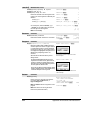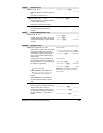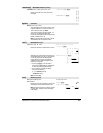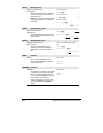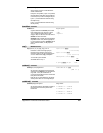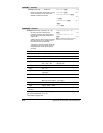
Appendix A: Functions and Instructions 863
real(
list1
) ⇒
⇒⇒
⇒
list
Returns the real parts of all elements.
real({a+iù b,3,i}) ¸ {a 3 0}
real(
matrix1
) ⇒
⇒⇒
⇒
matrix
Returns the real parts of all elements.
real([a+iù b,3;c,i]) ¸ [
a 3
c 0
]
4
44
4Rect MATH/Matrix/Vector ops menu
vector
4
44
4Rect
Displays
vector
in rectangular form [x, y, z]. The
vector must be of dimension 2 or 3 and can be a
row or a column.
Note:
4
44
4Rect is a display-format instruction, not a
conversion function. You can use it only at the
end of an entry line, and it does not update
ans.
Note: See also 4
Polar.
[3,pà4,pà6]4Rect ¸
[
3ø ‡2
4
3
ø ‡2
4
3
ø ‡3
2
]
[a,
b,c] ¸ [aø cos(b)øsin(c)
a
ø sin(b)øsin(c) aøcos(c)]
complexValue
4
44
4Rect
Displays
complexValue
in rectangular form a+b
i
.
The
complexValue
can have any complex form.
However, an r
e
i
q
entry causes an error in Degree
angle mode.
Note: You must use parentheses for an (rq)
polar entry.
In Radian angle mode:
4
e
^(p/3)4Rect ¸ 4ø
e
p
3
(4
p/3)4Rect ¸ 2+2ø 3ø
i
In Gradian angle mode:
(1100)4Rect ¸
i
In Degree angle mode:
(460)4Rect ¸ 2+2ø 3
33
3ø
i
Note: To type
4
44
4Rect from the keyboard, press
2
for the 4
44
4 operator. To type , press
2
’.
ref() MATH/Matrix menu
ref(
matrix1
[,
tol
]) ⇒
⇒⇒
⇒
matrix
Returns the row echelon form of
matrix1
.
Optionally, any matrix element is treated as zero
if its absolute value is less than
tol
. This tolerance
is used only if the matrix has floating-point
entries and does not contain any symbolic
variables that have not been assigned a value.
Otherwise,
tol
is ignored.
• If you use ¥¸ or set the mode to
Exact/Approx=APPROXIMATE, computations
are done using floating-point arithmetic.
• If
tol
is omitted or not used, the default
tolerance is calculated as:
5Eë 14 ù max(dim(
matrix1
))
ù rowNorm(
matrix1
)
Note: See also rref().
ref([ë2,ë2,0,ë6;1,ë1,9,ë9;ë5,
2,4,
ë4]) ¸
1 ë 2/5 ë4/5 4/5
0 1 4/7 11/7
0 0 1
ë 62/71
[a,b,c;e,f,g]
!m1 ¸
[]
a b c
e f g
ref(m1)
¸
1
f
e
g
e
0 1
a
øgì cøe
a
øfì bøe



